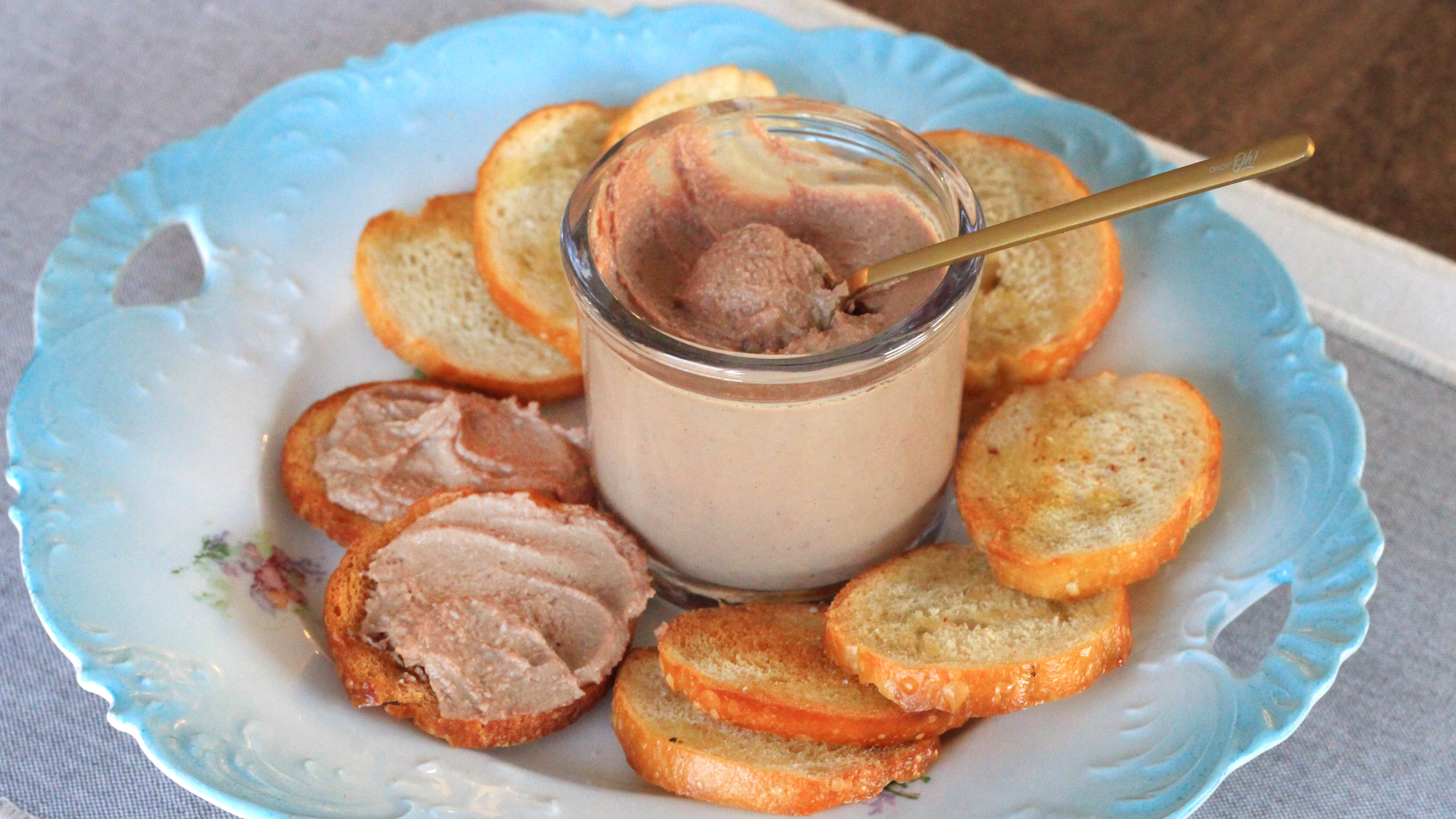Julia Child Eased My Fears Of Making Chicken Liver Mousse
We may receive a commission on purchases made from links.
I consider myself an un-squeamish cook. The more visceral activities involving meat are often relegated to me in our household. Boning chicken thighs? My husband would rather I do it. Tearing a shoulder roast along its seams? Unfazed. Picking minute veins and blood bits from steak, even if they get stuck under my nails, just to assuage a Persnickety Pete toddler? Basic.
I am one of those people who believes if you are going to be a meat eater, you've got no business pretending that what you're eating wasn't once alive. Good meat cookery comes from understanding and appreciating the make-up of your meat, even if that means removing tail hairs from a two-foot-long spiral of oxtail you're about to cook. Handling meat shows you what's fat, what's bone, and what's lean, what's edible, what's inedible, and how to deal with all of it.
And yet, my secret fear was organs. This prevented me from preparing what I feel is my go-to restaurant appetizer: chicken liver mousse. Cooking livers felt one step closer to the abattoir than I was interested in getting. And yet I love any sort of liver products. My second favorite sandwich is sliced liver sausage, fried in a pan with butter and on white bread. (Number one is ham and cheese with smashed Cool Ranch Doritos—don't hate). I'll eat foie gras and any country pate you can throw to me. And yet, I didn't want to touch any liver.
I feared the smell of organs, or the recoil if I accidentally sniffed them too deeply. I feared the unknown parts, which I will unprofessionally refer to as "squiggly bits"—whitish, yellowy, slimy connective doojiggies, whose purpose was unclear yet undoubtedly unpleasant.
I loved eating it. I feared cooking it. The dichotomy was frustrating and, truth be told, irrational. So bent on squashing that fear, I bit the bullet and looked into a number of French recipes for chicken liver mousse. The one I decided upon was Julia Child's from her classic tome, Mastering the Art of French Cooking.

I needn't have been so uptight about livers. The ones found at the modern grocery stores are clean and bright, the color of ruby port. They felt slick, but not slimy. Okay, there were some bits that sent a shiver down my spine, found in the connective tissues, but I shook it off. After a pep talk, I was back to yanking off squiggly bits and dicing away.
Julia Child's recipe called for cooking the diced livers until "stiffened, but still rosy inside." That's the key to chicken liver mousse that doesn't taste metallic. One may fear undercooked liver, but fear not—hot syrupy cognac is added to the ground livers, as is warm melted butter. The end product is cooked uniformly. The mixture may seem too loose at first, but after chilling for several hours, the consistency became perfect.
But still: Up until I tasted this chicken liver mousse, I had decided I wasn't going to make it again. It wasn't troublesome, just extra work, which included forcing the blended liver paste through a sieve. This step was not skippable—the sieve removed any rubbery, overcooked bits of liver, leaving a texture not far from melted ice cream.
But my fears were eased upon that first bite. It was all worth it. Not only that, I wanted to make it again. It's an impressive dish for guests, one that would likely elicit, "Wait a minute, you made that?" Yes I did. And I'm not longer afraid.
The flavor in the finished dish was subtly earthy with notes of minerality, alongside a soft undercurrent of white pepper, allspice, and thyme. It's balanced and smooth. Chicken liver mousse loves fruit, and you'll often see it paired with fig compote or a dark, bejeweled preserve. We devoured it on thin slices of toasted baguette, garnished with blackberry jam.
I can now confidently report I've upped my charcuterie game, and tackled a beloved dish that now I can make as often as I like. Or as much as I felt like handling livers.
Julia Child’s Chicken Liver Mousse
Makes about 2 cups
- 1lb fresh chicken livers, any fatty or squiggly bits removed, cut into a half-inch dice
- 2 Tbsp. minced shallots
- 2 Tbsp. butter
- 1/3 cup cognac (or madeira)
- 1/4 cup whipping cream
- 1/8 tsp. ground allspice
- 1/8 ground pepper (I used white pepper because I didn't want any black flecks)
- 1/2 tsp salt (plus extra for adjusting season at the end)
- Pinch of dried thyme
- 1/2 cup butter, melted
- Crispy baguette toasts or crackers to serve
- Fruit compote or jam, optional
- Food processor or blender
- Fine mesh sieve
Equipment
Cook the diced liver and shallot in hot butter for 2-3 minutes, until—as Child wrote—"stiffened, but still rosy inside." Pour the liver-shallot mix in your food processor or blender.
Pour the cognac into the pan, and boil, reducing it to three tablespoons of liquid. Pour onto the liver mixture, and add the cream and spices. Blend again for a few seconds until smooth. Add melted butter, and blend again to combine briefly. The appearance should be uniform. Working over a large bowl, press the liver mixture through a sieve with a wooden spoon, leaving behind any rubbery bits. Taste for seasoning. I found an extra pinch of salt necessary.
Pour the silky smooth liver mixture into small jars or ramekins, cover with plastic wrap and chill for 2-3 hours. Serve with baguette crisps or cracker, and with fruit compote or jam.

